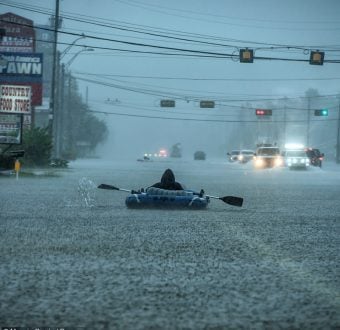At best, the U.S. Environmental Protection Agencys (EPA) proposed carbon rule is a signal to the energy market to keep heading in the direction its already going, which is away from coal and toward renewable energy sources. At worst, it could waltz America into another nuclear accident worse than Fukushima.
To be fair, EPAs proposed rule is not a climate plan. EPA Administrator McCarthy has been honest about that. EPAs underwhelming proposal would achieve the same amount of carbon dioxide reductions that the market achieved in half the time. The lack of ambition in the proposed rule would be easier to stomach if EPA didnt simultaneously attempt to advantage old and dangerous nuclear reactors.
Buried in the EPAs proposal, the agency encourages the continued operation of aged and decrepit nuclear reactors as well as the construction of new nukes. Under the proposed rule, states could receive credit for 6% of nuclear capacity in operation. The 6% credit could be figured into each states emissions goals regardless of whether that amount of nuclear power is actually slated to shut down. Many old nuclear plants that were built decades ago are ripe for retirement, including several with the same kind of reactor design that exploded and melted down in Fukushima. This section of the proposed rule appears to be a gift to the nuclear industry and President Obamas campaign contributors at Exelon. It amounts to yet another subsidy for the nuclear industry, encouraging them to keep running dangerous reactors that should be shut down and replaced with safe, renewable energy that doesn’t threaten communities with a nuclear disaster.
EPA also attempts to greenwash nuclear power by claiming that it is emission free and an economically viable option. EPAs proposed rule seems to have been infected by pro nuclear propaganda from the likes of Exelon and nuclear lobbyists here in DC. But even the pro-nuclear professors at MIT grudgingly acknowledge that nuclear power has a carbon footprint. And the $14 billion dollar + reactor under construction in Georgia could cost consumers an additional $2 million dollars per day due to delays.
At Greenpeace, we know that America and the planet can do better than promoting false solutions like nuclear! We can achieve twice the Co2 abatement that the EPA rule would while simultaneously phasing out old and dangerous nuclear reactors like the three that melted down and exploded in Japan. And were not alone in saying so: Morningstar Analysts have pointed out that the nuclear renaissance is dead in the west; analysts from Citi and other financial institutions have recognized that the age of renewables has begun. Both Wall Street and Main Street have abandoned nuclear power.
By attempting to extend the operation of old and dangerous nuclear reactors, EPA is running the risk of an accident worse than Fukushima. Contrary to the claims of the nuclear industry and those in their employ, nuclear will never be safe and clean. The commercial nuclear industrys track record is approximately one meltdown every decade. It may be hard to grasp that the Fukushima disaster is not the worst-case accident. But approximately 80% of the radioactive fallout from those three meltdowns blew into the Pacific rather than over populated areas. As bad as Fukushima is, a meltdown at an Exelon reactor in Illinois or New York could be significantly worse. The US still operates dozens of these General Electric designed disasters in the making that are too similar to Fukushima. And the captured U.S. Nuclear Regulatory Commission has failed to place filters on these GE reactors containments that are certain to fail should a meltdown occur. It was this unwillingness to regulate nuclear power and address its clear and present dangers that led the former Chairman of the NRC to call for its worldwide phase out.
EPA should take notice and drop its ill-advised plan to encourage old and dangerous reactors to run years beyond their economic lifetime. Instead EPA should embrace the renewable revolution that is upon us.



